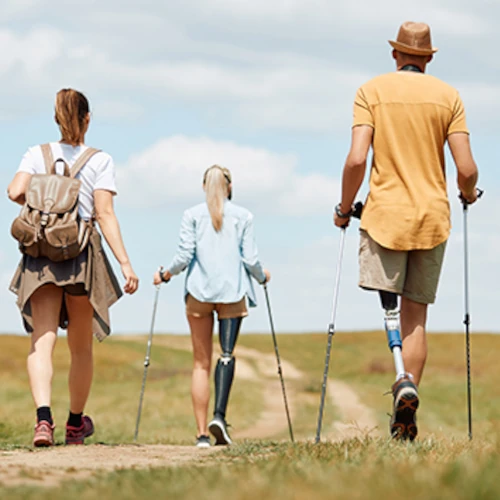
According to research published in the upcoming edition of Annals of Surgery, US amputation rates have steadily increased since 2010. A separate study that appeared in Frontiers in Public Health found a similar increase at the global scale, and a third study showed dramatic increases in a single US state. What’s contributing to the trend, and what (if anything) can be done about it?
Let’s start with the basic numbers. According to the Annals of Surgery study, below-knee amputation rates dropped from 12 per 100,000 Americans in 1993 to just 8/100,000 in 2010—a 33 percent decrease. The rate of above-knee amputations fell even more dramatically, from 11/100,000 in 1993 to just 6/100,000 in 2012, an overall decrease of 45 percent. But in the years since, both BKA and AKA rates have been on the rise. By 2021, below-knee amputations had reverted to a rate of 13/100,000, even higher than the baseline rate of 1993. AKA procedures had witnessed a less dramatic, but still significant, increase to a rate of 8/100,000 by 2021.
The increase in limb loss was accompanied by a marked change in amputees’ demographic profile. The average age for BKA fell by nearly seven years between 1993 and 2021, from 68 to 61.6 years old. The average age for AKA dropped by almost a decade, from 75 years old in 1993 to 67 years old in 2021. Since rates began to increase in 2010, amputees are more likely to be obese and have high blood pressure. Somewhat surprisingly, this study’s analysis did not identify an increase in diabetes as a risk factor in amputation rates.
The good news? “There is a potential for significant reductions given an increasing emphasis on structured amputation prevention programs and widespread adoption of sophisticated revascularization techniques,” the authors note.
Because this paper uses 2021 as an endpoint, its analysis may reflect a temporary spike in amputation rates caused by COVID. A forthcoming paper in the Annals of Vascular Surgery notes that major amputations increased sharply during the height of the pandemic (ie, the years 2020-21). The authors attribute the increase in part to the interruption of limb-preserving treatments such as PAD screening, diabetes screening, revascularization, and so forth, during the height of the pandemic. In addition, one of the common symptoms in COVID patients was blood clots, and a portion of those patients required amputation as a direct result of contracting COVID. “Following this acute period, however, the proportion of amputations was similar to the prepandemic era,” the paper concludes. If amputation rates did indeed regress after 2021, that trend wouldn’t be reflected in the Annals of Surgery paper.
Yet another window on amputation rates appeared last year in the Journal of Vascular Surgery, which published a study showing that amputation rates doubled in Oklahoma between 2008 and 2019. That period overlaps with the 2010-2021 interval examined by the Annals of Surgery study; crucially, it does not include the COVID years. Like the Annals of Surgery study, this paper showed an increase among relatively young patients (ie, between ages 40 and 60). “This finding could partly be explained by an increase in prophylactic and healing toe amputations in the young, which indicates we are working toward improved limb salvage,” the authors note. “Alternatively, it may also indicate chronic diseases [such as diabetes and PAD] are worsening and affecting younger ages.”
The Oklahoma study identified the uninsured/underinsured population as being particularly prone to limb loss. The authors note that the state’s uninsured population was elevated in part because Oklahoma did not approve Medicaid expansion; that finding has relevance in light of the anticipated drop in Medicaid enrollment due to the One Big Beautiful Bill passed last month by Congress. Other significant risk factors in the Oklahoma study included unmarried status, rural residence, and Black or Native American race.
The Oklahoma paper concluded with two points: First, there is an urgent need for targeted limb-preservation programs to reverse the increase in amputation rates; and second, interventions should be targeted toward populations who are at increased risk of limb loss, especially uninsured and undereinsured residents.